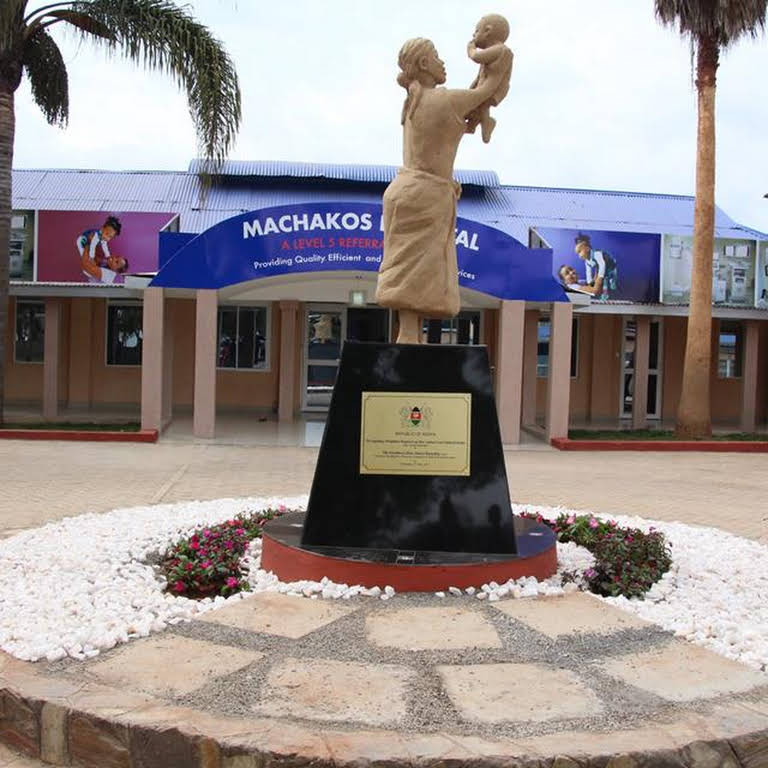
Introduction
In 2019, Kenya launched the Universal Health Coverage (UHC) Scheme, which was piloted in four Counties: Machakos, Nyeri, Isiolo, and Kisumu. Its purpose was to ensure Kenyans access health services where and when needed without financial hardship. The four Pilot Counties were selected through an evidence-based process considering their disease burden. Machakos County was selected due to the high number of Accidents and Emergencies (A&E), mostly from the Road Traffic Accidents (RTA) that occur along Mombasa Road. The County experienced delayed response to Public Emergencies, including RTAs, Medical emergencies, fire outbreaks, and natural disasters, due to a lack of resources required to respond. Secondly, the public (Motorists, community, bystanders etc.) lacked basic knowledge on how to reduce, respond and handle accidents and emergencies, which led to the mishandling of victims hence increasing the County’s A&E mortality rates. Inadequate personnel and equipment to manage such emergencies in the County hospitals contributed to RTA Mortality Rates
Implementation of the Practice:
The County Government of Machakos, through the UHC Pilot program, focused on four target areas: delivery of basic and specialized services, Health Systems Financing, Community Health Services, and Public Health Services. Under the delivery of basic and specialized services, the County acquired five Advanced Life Support (ALS) ambulances and set aside funds for Operations and Maintenance (O&M). The five ambulances were an addition to the 70 ambulances already owned by the County. The O&M funds catered for the maintenance of ambulances and fire engines to ensure timely response to emergencies. The County Emergency Medical Technicians (EMT) department, through the Dispatch Control Center, ensured there was an ambulance well placed in every basic unit (sub-ward) to respond to disasters/emergencies.
The County Government of Machakos conducted sensitization forums to create awareness on reducing, responding to and handling accidents, emergencies, and disasters. The forums were conducted at three levels: Leadership and Governance, which targeted County executive and assembly leadership; Internal, targeting the County and Sub County health management teams; and the Community, which targeted both primary & secondary schools and Community Health Volunteers (CHVs). The County further employed more health care workers, including medical equipment (CT scan and MRI) operators and implemented the ‘downward expertise movement’ whereby the medical services are taken closer to the need (decentralizing from high-level facilities to low-level facilities). To reduce referral costs, Machakos County Government hired consultants/experts from Kenyatta National Hospital and revived the Community Health Services by providing CHVs with training kits, uniforms, capacity building and a stipend (KSh.2,500 p.m.).
Results of the Practice
Reduced RTA Mortality Rates. The acquisition of ALS ambulances and sensitization of the public on reducing, responding to, and handling public emergencies contributed to the reduced number of deaths caused by RTA from (1,776) in 2019 to (917) in 2020.
Reduced Maternal Mortality. The Operations & Maintenance allocation ensured all the ambulances were well maintained to respond to public emergencies, including medical emergencies, e.g., mothers in labor, which contributed to the reduction of maternal deaths by 3%.
Decongestion of High-Volume facilities. The downward expertise movement approach ensured the service was taken to the decongested high-volume facilities, e.g., level 4/5 hospitals creating room for extremely critical cases.
Decongestion of the Outpatient Department. Activation of the Community Health Volunteers dealing with preventative care led to the decongestion of the outpatient department.
Optimal resource utilization. Hiring consultants/experts like oncologists from Kenyatta National Hospital was less costly compared to referring patients to Kenyatta National Hospital, which would incur expenses such as fueling ambulances and paying for the services.
Availability of Quality Services. Hiring more Health workers, including Medical Equipment Operators (CT Scans, MRI Machines) ensured the availability of good quality services.
Lessons learnt:
Lack of proper framework for implementing UHC resulted in delayed service provision. Disbursement of funds was done through the Ministry of Health to County Revenue Fund and later to Health Departments. This was time-consuming and delayed service delivery.
UHC requires resources, and therefore, it needs commitment from both levels of government.
Recommendations
There is a need for a proper UHC implementation framework, such as UHC operation guidelines.
There is a need for sensitization of both the County government executive and assembly (to avoid political interference) and the public for enrollment.
UHC needs a Multisectoral approach for its success.
There is a need to increase the healthcare workforce before implementation. Due to free services, the number of patients seeking health care surpasses the required patient-to-doctor ratio.
Commodities and supply agencies need to be well-prepared to avoid stockouts.
For UHC to work, there is a need for ringfencing of health funds to ensure the flow of funds goes directly to facility accounts and avoid the long bureaucratic approval channel that disrupts services.